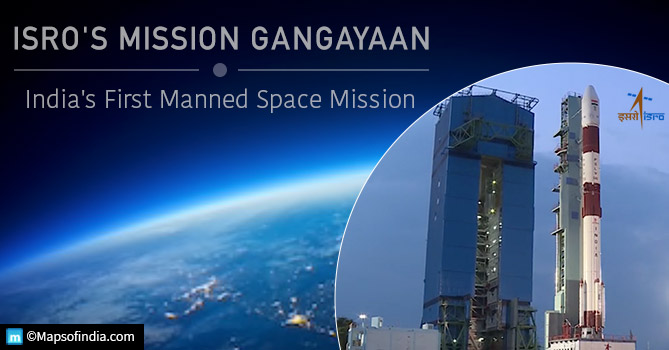The need for a Geosynchronous Satellite Launch Vehicle (GSLV):
The last space exploration program of ISRO had attracted much flak and criticism arising from the fact that ISRO had used a Polar Satellite Launch Vehicle (PSLV C25) to launch the Mangalyaan on its mission to Mars. The 1350 kilo Mangalyaan carries a payload of only 13 kilos, in contrast to the European Mar’s Expresses’ payload of 116 kilos. The insufficiency of the instruments on the Mangalyaan, heavily delimits the space craft’s capacity to furnish any new information. The Mangalyaan’s limitations arise directly from the ISRO’s repeated failures in designing a Geosynchronous Satellite Launch Vehicle (GSLV), despite continued research on the said vehicle for the past 15 years. In fact, the ISRO’s GSLV launches seem to be plagued by a curse. Since the first trial flight of the indigenously designed GSLV in 2001, the launch attempts had been met with consistent failures (four failed launches out of seven attempts). The last launch program in August 2013 had been interrupted rather drastically when the technicians detected a hydrazine fuel leak in the second stage of the rocket propelled engine of the GSLV just on the eve of the departure of the said vehicle. A GSLV is capable of launching a much heavier satellite (2000 kilos plus or up to 5 tons). Such a heavier satellite can evidently be furnished with a greater number of necessary equipments (higher payload), which in turn significantly enhances the observational capacities of the satellite.
However, this time the arduous efforts of the ISRO scientists might just pay off. In an answer to all the criticisms, ISRO had been successful in designing a fully functional GSLV as it started the countdown for the launch of the entirely indigenously developed GSLV – D5 scheduled for liftoff on Sunday, January 05, 2014 from Sriharikota. The GSLV – D5 is carrying the GSAT – 14 satellite, and excepting deterrent factors like bad weather conditions or any last moment technical hitch, the GSLV – D5 is supposed to launch the 1,982 kilo GSAT – 14 at 4:50 PM from the second launch pad of ISRO’s Satish Dhawan Space Center. As further confirmed by the ISRO officials, “After the launch authorization board gave its clearance, the 29 – hour countdown started at 11:50 AM. Everything is going on schedule.”
The launch program of the GSLV – D5:
Determined to break the curse supposedly looming over the launch attempts of GSLV’s by ISRO, the scientists have left no stone unturned this time in the designing of the GSLV – D5, which has a height of 161 feet and a liftoff weight of 640 tons. The GSLV – D5 pertains to the GSLV – Mk III category and happens to be the heaviest rocket ever built indigenously. Following the failure of the last GSLV launch attempt, the ISRO scientists have been relentlessly pursuing the designing of the GSLV – D5, in fact going over the launch vehicle with a fine toothed technical comb, so as to eliminate all the chance factors confirming a smooth countdown leading to an equally smooth and textbook liftoff. As further confirmed by S Somnath, GSLV – Mk III Project Director, “The solid first stage and the core base shroud have also been inspected and the affected elements replaced. The four strap – on engines too have been replaced”.
However, the most important and challenging aspect of this particular GSLV launch happens to be the real time flight assessment of the rocket’s third stage consisting of the indigenously manufactured and assembled cryogenic stage, technically designated as the Cryogenic Upper Stage (CUS). The CUS is considered to be the backbone of the successful GSLV flights of the future. In this launch, there is a marked departure from the experimental GSLV launches attempted earlier, where a Russian made cryogenic engine had been implemented. However, in the GSLV – D5, the Russian built CUS has been replaced with a completely indigenous version.
What makes the GSLV mission even more challenging is the calamitous performance of the new engine in its initiatory flight in April 2010, where the said engine had stalled within seconds of its ignition, deep – sixing the vehicle in the sea. So, it is no wonder that, there will be a lot of ‘keep your fingers crossed’ and ‘touchwoods’ accompanying the GSLV’s liftoff on January 5th, 2014.
The other important aspect of the GSLV launch program is evidently an attempt of India to gain a foothold in the global communications market, where the communication satellites like the GSAT – 14 piggybacking the GSLV – D5 play a pivotal role. The GSAT – 14 is equipped with six Ku – band and six Extended C – Band transponders, that is aimed to facilitate a nationwide digital audio transmission and other communication technologies. Designed to last in a geosynchronous orbit for 12 years, the GSAT – 14 is supposed to take the place of the GSAT – 3 (EDUSAT) that has been orbiting the earth for a decade.
The powerful rocket boosters of the GSLV Mk – III series can effortlessly lift relatively heavy communication satellites at an apogee of 36000 kilometers, placing them right above the equator with an orbital velocity same as the rotational velocity of the earth. Since the relative velocity of such a satellite is in congruence with the earth’s rotational velocity, such a satellite appears to be stationary from any point on the surface of the earth. The advantage of such a geostationary satellite (the orbit of which is termed as a geosynchronous orbit), is that, it can be tracked through a bank of simple antennas owing to its apparently stationary position, which is far less complicated than tracking a moving satellite.
Cryogenics in GSLVs:
However, the thrust necessary for the GSLV Mk – III class of launch vehicles, like the GSLV – D5, for hoisting a 5 ton communication satellite into a geosynchronous orbit can only come from cryogenic engines, which can generate the necessary thrust per unit mass for achieving such spatial feats. Cryogenic engines use liquid oxygen or hydrogen, the fuel being maintained at extremely low temperature conditions which upon combustion emanates only water as exhaust (hence absolutely non – polluting) and also provides the colossal thrust needed for the flight of the GSLVs carrying such heavy payloads.
India’s cryogenic technologies suffered some serious setbacks in 1993, when Russia had backed out of a cryogenic motor technology transfer contract with India as a result of a false provocation by USA who had suggested that India might be planning to implement its space technologies for military purposes. The reasons may also have been purely economical as India’s low cost heavy launch technology would have been in direct conflict with the business interests of Europe, Russia and USA. However, whatever happens, happens for good and such setbacks had inspired India today to design its own cryogenic rocket technologies.
Conclusion:
Upon conclusion of the countdown, the GSLV – D5 will lift off and embark on a flight with an estimated flight time of 17 minutes and eight seconds launching the GSAT – 14 in a Geosynchronous Transfer Orbit along with the aspirations of the ISRO scientists. A successful achievement of the launch and flight of the GSLV – D5 will make India the sixth country to possess such high – end space technologies. It will also put India in the same page with China, Japan, USA, Russia and France as a global authority in space probe. The successful completion of the GSLV program will also considerably curtail India’s reliance on foreign launchers like the Ariane of ESA for launching INSAT class communication satellites. ISRO has blueprints for the launching of two more Mk III class GSLV in six month intervals, which upon successful completion will witness the implementation of a third Mk III class GSLV for the Chandrayaan – 2 Moon Mission. The Mk III class GSLVs are also designated for human space explorations and for constructing orbiting space stations. While the cost of space exploration in the international standards is becoming increasingly higher, India perhaps, is the only country who can be accredited with a successful space launch at a cost 30% to 35% lower than other countries. Credit obviously goes to ISRO, who had developed an array of space technologies that are efficient yet cheap. Most important of all is the fact that, with the successful completion of the GSLV program, India will be able to grab its entitled stake in the USD 300 billion global space market!
Read More:
Secret behind ISRO’s next Interplanetary Mission
ISRO: Touching space and beyond
The ISRO/Antrix – Devas Deal
Smart Eye In The Sky : The RISAT-1
Mars Orbiter Mission (MOM) – A Success for ISRO
GSLV Test-Launch: A Baby Step Before the Giant Leap
Congratulatory words pour in for Mars success
No Rewards For Mangalyaan Scientists
Hello! Mars, India Has Come! We’re in the Orbit!
India’s quest to reach Mars – the countdown begins
Mangalyaan Successfully Embarks On Its Trajectory To Mars
MOM : An Achievement Or A Luxury In The Name Of Space Exploration?
India’s Mars Mission: Is it an Attempt to Counter China’s Space Ambition?
MOM Overcomes Technical Hurdle And Back On Its Trajectory To Mars
Destination Mars : The Mars Orbiter Mission 2013




